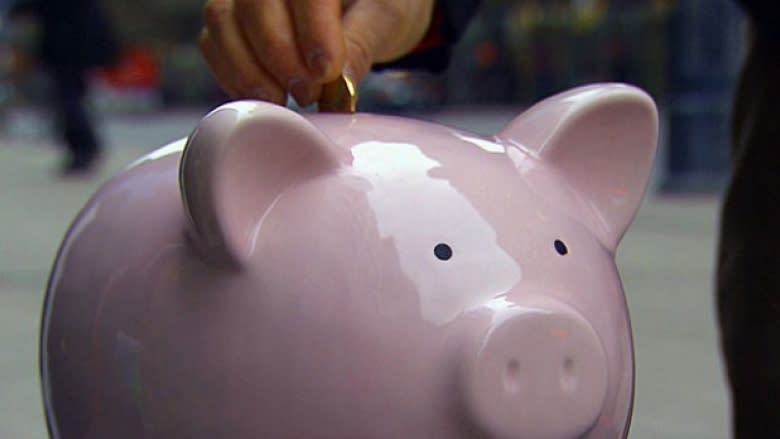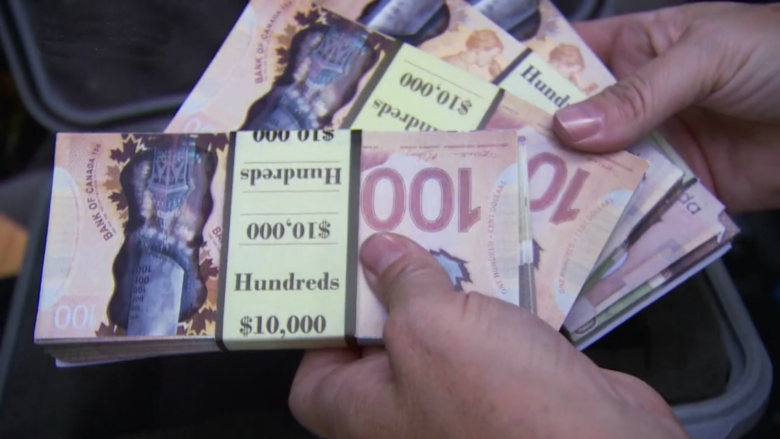5 tips to keep more cash in your pocket
Trying to keep a little bit more of your cash in your wallet? It isn’t always easy.
But if you’ve already steered off course from your New Year’s financial goals, there are a lot of easy ways to get back on track.
CBC’s Marketplace investigated charges that consumers face, but don’t need to pay. Watch "Stash Your Cash" Friday at 8 p.m. (8:30 p.m. NT) on CBC-TV and online.
Follow the hashtag #stashyourcash on Twitter for viewer-submitted tips on saving some extra money.
Finance writer Kira Vermond, author of The Secret Life of Money: A Kid’s Guide to Cash, shares her secrets about little things you can do that can make a big difference for your bank account.
1. Take a close look at your bills
It’s worth going through all your bills to make sure you’re not being charged more than you should.
“It’s good to pull out all your bills and spread them out,” says Vermond. “Pay attention if you’re being overbilled.”
Vermond discovered she was being overcharged by her cable provider $40 a month for a digital box she didn’t have. The charge had been on her bill for eight months.
“We have little kids running around, so we thought the bill was too high but we kept putting off looking into it,” Vermond said.
When they finally did look into it, the company reversed the charge, but only for three months.
2. Check if you’re covered
A lot of credit cards offer extra protection and coverage, but it’s easy to forget what coverage you have.
“A common one is car rental insurance,” says Vermond. Many people don’t realize that they don’t have to buy insurance when they rent a car because they have coverage under their credit card.
Your card may also have travel insurance, theft protection, extended warranty or damage insurance for anything you buy with the card.
Some cards even offer a price check protection if you find the same item at a lower price within a few months of purchase. Check to see what coverage you have before you opt to pay for protection elsewhere.
3. Check your regular payments
Another good way to catch money that’s falling out of your wallet: Go through your bank and credit card bills to see what regular payments you’re making.
Vermond recommends checking once a year: You may find out that you are subscribed to services that you have forgotten about or rarely use.
“I know I’ve added a few subscriptions for magazines and newspapers over the years about things like cooking and travel, but life changes and tastes change, and I don’t always read them.”
Vermond signed up for an online subscription service that let her read several magazines and cost less money.
“I also discovered I was paying for a software program that I’d used eight months ago,” Vermond says. “I was still paying for it every month.”
Another monthly charge that many pay but don’t use? Gym memberships.
"Now’s the time to look at your gym membership," Vermond says.
"Are you really using it? Is your family using theirs? I’m paying $150 a month for my family to be YMCA members, but I’m the only one who uses it on a regular basis. We’re going in this month to cancel their memberships and we’ll save $1,200 in one year.
"I want to use that money to pay for activities the kids actually enjoy. The Y just isn’t doing it for them."
4. Remember what discounts you get
Knowing what discount programs you qualify for can also save you significant cash, says Vermond.
“A lot of credit cards will give you discounts on hotel rooms,” she says, noting cardholders often forget that.
Many large companies offer employees discounts on everything from entertainment tickets to local restaurants. If you’re a member of a group such as CAA, you are also eligible for better rates at tourist attractions, hotels and other attractions.
You may also qualify for some seniors’ discounts, even if you’re only in your 50s.
Vermond also recommends that before shopping for anything online, check around to see if you can get a deal.
“Check to see if there’s a promo code anywhere online you can use,” she says.
"I can’t remember the last time I’ve had to pay shipping and usually I get a discount on the clothes, too. Checking for a code takes about 45 seconds and usually saves me between $30 and $60."
5. Don’t skip the small stuff
Many of us are less cautious about spending a few dollars here and there, but small costs can seriously add up, says Vermond. One that she recommends cutting: Library late fees.
“All of us have a lot of balls in the air, and library books are the last thing that we remember to take care of, especially when life gets busy,” she says.
But since Vermond signed up to get an email alerting her to when her books are due, she says she’s saved $30 to $40 a year.
It may not sound like significant savings, but Vermond says that’s why small stuff so easily escapes our focus.
“That $40 can go to a nice little lunch out with your friends,” she says. “It’s free money.”




